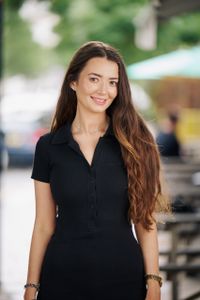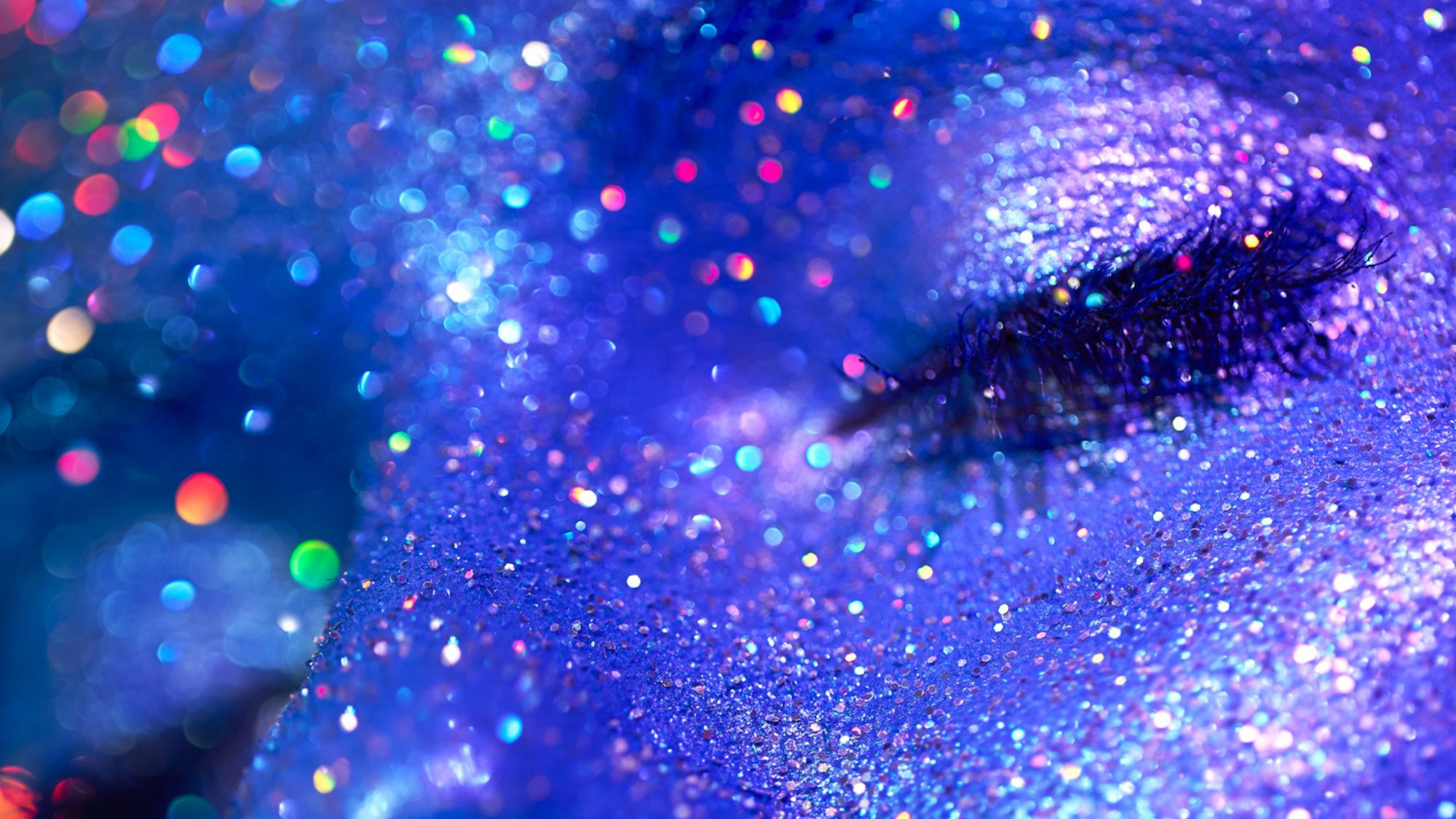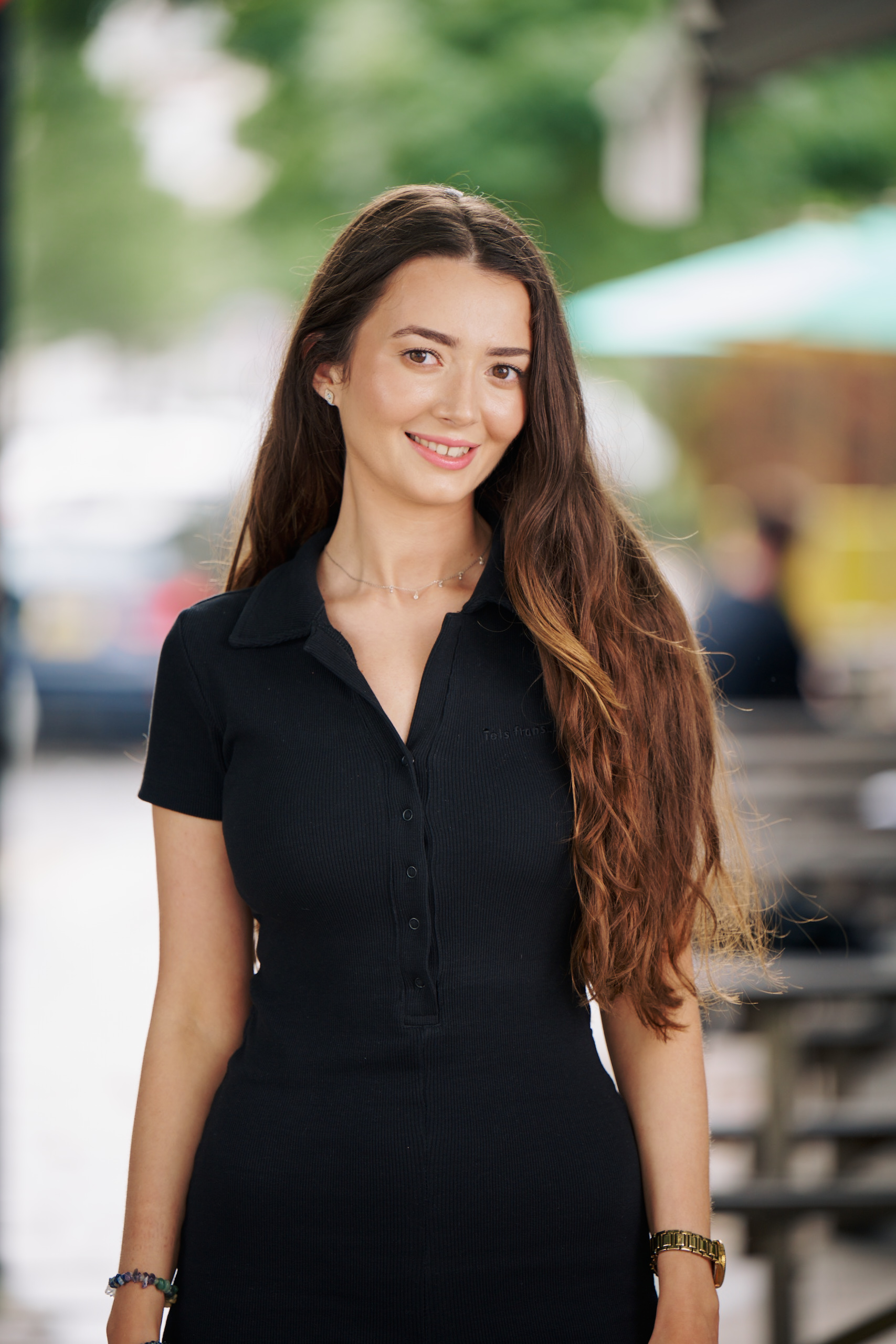The 'reality' of TikTok's Bold Glamour filter proves we have a major problem on our hands—here's why
The word filter doesn't cut it anymore


I love a TikTok beauty trend as much as the next person, but the Bold Glamour filter currently taking over the app isn't the sort of trend I ever expected. Right now, it seems everyone is talking about and trying the new 'Bold Glamour' filter effect on their content. In fact, it has already been used 9.2 million times—and, in a roundabout way, it's starting a conversation we needed to have.
At face value, the effect doesn't seem much different to the filters we've seen on social media before—smaller nose, lifted cheekbones, big eyes and even bigger lips. The Bold Glamour filter simultaneously lifts the eyebrows, while adding a heavy make-up look. It's more or less the same kind of social media filter we've become accustomed to over the years.
The difference with this one? It seems more realistic. Sure, the Bold Glamour filter is getting creators talking about the dangers of beauty filters on mental health and confidence—but this viral criticism doesn't even scratch the surface of everything that's wrong with it.
Every other video on my For You Page seems to feature somebody talking about the Bold Glamour filter being 'hyperrealistic'. Unlike other filters of its kind, the technology behind it is so good you actually find yourself double-taking. Seriously, the false eyelashes won't budge even if you swipe your hand across your face. But is the Bold Glamour filter actually as realistic as it seems, or are we just conditioned to think so?
Dr Phillippa Diedrichs, professor of psychology says, "The Bold Beauty filter reinforces unrealistic and narrowly defined beauty standards that are unachievable without digital distortion, extensive styling and make-up, and perhaps even more invasive cosmetic procedures. They also often reinforce euro-centric and hyper-sexualised beauty standards and therefore may perpetuate appearance-based prejudice and the objectification of women."
And research by Dove found that 85% of girls had used a retouching app by the age of 13. "Dove Self-Esteem Project research shows that more than half of girls say they can’t live up to the beauty standards projected on social media, and 1 in 2 girls say toxic beauty content on social media causes low self-esteem—this filter illustrates why young people feel this way.” says Firdaous El Honsali, Global Dove Vice President.
As a social media platform, TikTok is known for its more 'real' approach to content; it's a platform where creators share the most openly, not afraid to say what they really think. So it's great to see some of the apps biggest creators speak out against the Bold Glamour filter. But is speaking out, while simultaneously giving it air time, really enough?
Celebrity news, beauty, fashion advice, and fascinating features, delivered straight to your inbox!
With the rise and rise of 'beautifying' filters and the normalisation of facial tweakments, I've found myself returning to the question: what is it about TikTok's Bold Glamour filter that crossed the line? So I decided to investigate, and it turns out it's so much more problematic than it even seems...
Filter vs. Augmented Reality
The most prominent issue with the Bold Glamour filter is its supposed likeness to reality. We are used to social media filters glitching, in that they quickly reveal themselves when, with the slightest movement, you have fake eyelashes on your hand, for example.
With Bold Glamour, there is no glitching. The make-up, filler and face shape moves as you do. It's being called out for being scarily realistic, but this is because what we're dealing with isn't a 'filter' at all—it's full-blown augmented reality.
And by being dubbed a filter, we're conditioned into believing the results are attainable. After spending 30 mins looking at myself with and without the Bold Glamour 'filter', I would be lying if I said I wasn't considering a lip flip. My brain is telling me some small tweaks can improve the way that I look, rather than acknowledging what I'm looking at is an augmented reality effect.
"The precise mechanisms underpinning these effects are not yet clear, but I would theorise that engaging in the process of selfie-taking and photo-editing leads users to compare their actual appearance to an idealised and unrealistic retouched appearance which is impossible to achieve in real life," Dr Diedrichs explains.
One TikTok creator explains the reason the bold glamour filter looks "so realistic" is because it has been created using Generative Adversarial Networks (GAN), which is a completely different technology used in normal filters. Usually a filter is laid across the face, however the GAN technology in this effect regenerates every pixel on the users face to output a new image.
And this moves me onto my next point...
The reality of tweakments
Social media is a breeding ground for plastic surgery trends (just look at buccal fat removal), it's where a whole generation became obsessed with bigger lips, razor-sharp cheekbones and smaller noses. If we thought Kylie Jenner supposedly dissolving her lip filler was going to stop a social-first generation from plumping their lips, we thought wrong. Searches for 'lip flip' (an aesthetic treatment that involves having Botox injected around your lip line to create an illusion of bigger lips) have grown 24,344% since 2018, according to research by The Bulimia Project.
So I'm left asking: can we ever really look like our beauty filters? In short, no—particularly when we're dealing with AR instead of filters. But that doesn't seem to be stopping us from trying.
"There has definitely been a big shift in what people have been asking for. Back in the day people used to come in with pictures of Angelina Jolie or Jennifer Aniston and say 'I want to look like them'. These days, people are bringing in pictures of themselves that have been edited so much they don't look human anymore, and it’s unachievable," says Dr Ahmed El Muntasar, GP and award-winning aesthetician.
And when dealing with unrealistic standards, it's important that we address the dangers of people seeking help from unlicensed or unethical practitioners. Aesthetic surgeon, Dr Glyn Estebanez of Prima Aesthetics explains, "What can start as filtered social media images can turn into something a lot more dangerous—especially when injectable treatments that physically distort the face into what are very unnatural shapes and dimensions become involved. People can forget what normal beauty looks like. We’re now looking at a beauty that not only removes pores and flaws, but completely changes the structure of the face outside of the normal realms of beauty."
A post shared by Leonie Hanne (@leoniehanne)
A photo posted by on
A ‘real’ skin conundrum
And speaking of unattainable standards, we need to talk about the 'real skin' aspect of this filter. Nowadays, it's rare to see skin texture on social media. Skin texture has almost seemed to become a thing of the past. The Bold Glamour filter has been noted by some creators to show 'some skin texture', something they claim only adds to its supposed realism—but if the Bold Glamour filter is setting a precedent for realistic skin texture in 2023, we're doomed.
Skin texture (that's anything from small bumps to visible pores) is not only completely normal, but necessary. Reminder: we need pores for our skin to function.
Sure, we can all be guilty from time to time of choosing the best lighting and adopting a certain angle to take a snap, but what happens when an entire blanket of social media users start believing skin texture isn't just undesirable but also not normal? In fact, just this week a photo of Kim Kardashian shocked Instagram users over just how different she looked in a seemingly unfiltered photo.
"It's just not realistic at all. Constantly seeing poreless filtered skin can leave us in the quest for the same perfectly filtered skin, which is pretty much impossible", says Dr El Muntasar.
As a Gen-Z beauty journalist who used 'skin-perfecting' filters growing up, I can say first-hand that I became obsessed with finding the perfect skincare routine in the bid to have completely smooth, poreless skin—something I've since learned just isn't possible.
The AI Bias
Beyond the surface level issues I've encountered with the Bold Glamour filter, there's bigger problems at play here. You may have heard of AI bias. If you haven't, let me explain.
AI bias is when an algorithm or computer system plays into either racist or sexist ideals. We first saw the theory of a sexist AI bias hit major headlines when, last year, a different TikTok effect emerged—The AI face filter, which transforms any photo into an AI-created image.
The AI bias came into play when creators started realising that when the effect was used on women, it would result in an image that appeared stereotypically more 'feminine'. And the results of the Bold Glamour effect follow similar tropes. In fact, the end result is completely different for men. When a femme-presenting person uses the filter, they are given a heavy make-up look—the one we have already spoken to, with eyeshadow, lip filler and bold brows. When used on a masc-presenting person, there is a slight 'enhancement', but no make-up appears to be added.
It's as though TikTok wants us to know that, when you're a woman, it pays to look good on social media—whether you're creating content for fun, to socialise with friends, to sell a product or to link to an OnlyFans account.
When the filter comes off
"So glad these filters existed only after my prefrontal cortex fully developed," captions one of the viral videos using the Bold Glamour effect. "Watch me hurt my own feelings," is another common theme when it comes to using the effect. So let's talk about the most important issue at play—how we're made to feel when we're left looking into our real faces after the filter is removed.
On Luna, an app providing mental health support to teenagers, the third most popular category in the app is body image and positivity. "The teens I have spoken to in my research say they are aware of digital distortion online and in advertising. However, just because they are aware of this, it doesn’t always stop them from wanting to aspire to look like these retouched images or feeling bad that they can’t match them," says Dr Diedrichs.
And it's not just in teenagers that we are seeing a decrease in self confidence from these augmented reality features on social media. As someone who grew up with filters, they started off fun, innocent and seemingly harmful—remember the classic Snapchat dog filter and flower crown? Five years ago, we never thought we would get to the point where some of us can't post an Instagram story without a filter that alters our face entirely.
"Beauty filters completely distort our view of ourselves. They provide an entirely unachievable ideal which by its very nature creates feelings of disappointment and anxiety to try and achieve something that can't be achieved. This can exacerbate feelings of lack of self worth, worry, anxiety and depression, as well eating disorders and body dysmorphia," says Emma Taylor, Clinical Lead at Wysa.
It's all fun and games until, like so many other thousands of TikTok users, removing the filter leaves us feeling disappointed with our own 'real' faces. "The difficulty is that then when someone looks in the mirror or sees an unedited photo of themselves, they are surprised, as they look nothing like the filtered images. They create a distorted self image. Having a strong sense of self is linked to positive wellbeing, and undermining this sense can have negative effects," Taylor continues.
This week, my own mother showed me a video of a family friend. She commented on how good she looked. She is was in total shock when I told her that the video she was viewing showed the Bold Glamour filter in full action. Comparison is the thief of joy. We already know that comparing our lives to someone else's Instagram highlights isn't the best option. The Bold Glamour filter acts as a reminder not to do the same when it comes to our faces.
"Beauty filters have been shown to have a direct link to low self esteem, low confidence and lower life satisfaction. Trying to achieve that unachievable goal can create a vicious cycle of anxiety and even body dysmorphia." explains Taylor.
#stopusingfilters nearly has a million views already, and that is a trend I can get behind.

Dionne Brighton is the Social Media Editor at Marie Claire UK. After writing about everything from nail trends to celebrity style moments for Marie Claire UK, Glamour UK and Woman & Home, she now leads the brand’s social strategy. Her work transforming Marie Claire UK’s social platforms earned her a BSME Talent Award nomination.